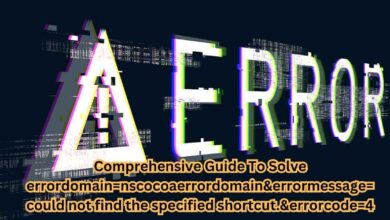
Ray’s revolution of distributed computing involves the creation of a parallel and distributed application that is versatile and efficient. It makes it easier for developers to design scaleable systems by allowing them to deploy complex algorithms across different nodes easily. Ray’s framework, however, accommodates various kinds of workloads from machine learning and data processing to reinforcement learning and hyper-parameter tuning.
Thus Ray assists developers to build robust fault tolerant high-performance applications on top of high-level abstractions. Ray is open source and has a very active community which propels innovation making it one of the main building blocks for future scalable distributed architectures.
Key Takeaways
- Why modern applications benefit from distributed computing
- Large-scale Distributed Computing Made Simple with Ray an Open Source Framework
- Examples of Distributed Computing with Ray in Real World Applications
Introduction to Distributed Computing
Distributed computing is a paradigm that enables multiple computers to collaborate on accomplishing a single task. This requires a computer network that passes messages between them so they can effectively communicate and coordinate their actions. These features allow faster data processing and computational performance thereby making possible solutions to complex problems within shorter time frames.Historically, the development of distributed computing was influenced by the need to overcome limitations inherent in one-system computation such as scalability or redundancy.
Python Ray is a notable framework in this arena. It simplifies the construction as well as execution of highly productive large-scale distributed systems, enabling small or expansive applications alike utilize them. By using Ray, organizations attain higher levels of performance seamlessly without complexities normally associated withdistributed computing.
The Rise of Ray
Ray has become popular among techies since it eases all these processes involved in distributed computing. The latest trends in distributed computing have made it easy for developers to increase their application’s sizes through harnessing cutting edge concepts related to this area. Little wonder then thatit adapts well into any kind of contemporary computer system either big or small due its flexible nature.
Ray’s success comes from its adaptability and simplicity. In contrast to other platforms that often involve complex setups that require in-depth system knowledge, Ray provides simple APIs along with comprehensive documentation. This simplifies the learning process and allows for rapid implementation, democratizing advanced distributed computing techniques.
Key Features of Ray
APIs easy for anyone to use when creating distributed applications. They enable developers to concentrate on designing algorithms rather than worrying about system architecture complexities.
- Scalability: It can work with small scripts or big high-scale applications. For instance, Ray dynamically scales depending on resource usage which ensures it is versatile for various use cases.
- Flexibility: Supports different languages including Python and Java.The variety of programming languages makes it much easier to adopt into existing projects with as little friction as possible for integration into diverse development teams.
- Integration: Besides, Ray naturally integrates some of the most popular frameworks in machine learning like TensorFlow or PyTorch. Therefore, among data scientists and AI researchers who need a powerful distributed computing solution for training and inference of models, this framework remains relevant.
Applications of Distributed Computing
Distributed computing has many applications that vary widely. From data analysis to machine learning tasks can be put on several computers to increase their effectiveness greatly. For example, in order to optimize ride-sharing algorithms Uber uses large-scale distributed computing. Hence forth huge amounts of information may be processed within real time leading to improved precision and efficiency in this service.
Distributed computing is also key in scientific research, helping scientists better handle big data sets. This has been necessary in fields like genomics where the analysis of genetic sequences require significant computational power. Through workload distribution, researchers can achieve quicker findings and thus know more ideas within a shorter time span making scientific discoveries to speed up.
Benefits and Challenges
Among the major benefits of distributed computing include enhanced performance, fault tolerance and flexibility. By distributing tasks across several systems organizations can achieve incredible computation speeds and resilience as well. A distributed system for instance would see one node failing but others will continue keeping the system running without any problem. High availability and reliability are critical for applications that are demanding.
However, it also comes with challenges, including complexity in setup and management, data synchronization issues, and the need for robust network infrastructure. Coordinating nodes as seamless as possible requires careful orchestration while managing distributed systems. Tools and expertise such as these have been aimed at solving such problems by frameworks like Ray. Using Ray’s intuitive design alongside its rich support features makes distributed computing easier to wider audience mitigating these complexities.
Case Studies
Several organizations have managed to successfully implement Ray for their distributed computing requirements. For example, a leading e-commerce company used Ray to improve their recommendation system which significantly increased user engagement rates. Personalized recommendations were given in real-time thanks to sharing out the load on computations which led to an increase of customer satisfaction resulting into more sales being made by this firm.
Similarly, a research institution utilized Ray to expedite genome sequencing proving how adaptable this framework was among diverse domains. In so doing, the facility was able to quickly process huge volumes of genomic information thereby facilitating advancements in medical research outcomes This indicates how business has changed through decentralization coupled with cases where companies have become much more efficient because of it.
Conclusion
Technology is clearly shaped through distributed computing today; most likely forevermore into future times yet unseen or even imagined yet to occur. With frameworks like Ray making it accessible and manageable, more industries can harness its power to solve complex problems and drive innovation. There are issues that were previously intractable to developers and researchers; now they will be able to address them thanks to the versatility, scalability and simplicity of Ray.
As we move forward, the importance of robust distributed systems only grows, promising a future where computing potential is fully realized. It is possible for organizations to take advantage of this transformational technology by deploying an integrated distributed computing framework while maintaining their competitive edge.



